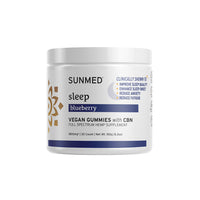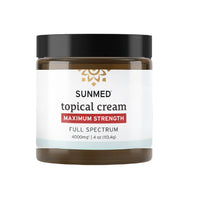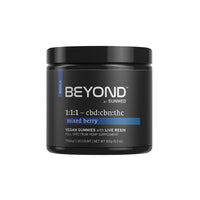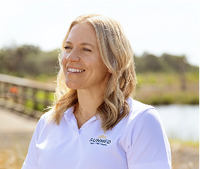How To Read a CBD Certificate of Analysis (COA)
A CBD certificate of analysis is a key part of making sure you know what your product contains. Here’s what you need to know about a COA.
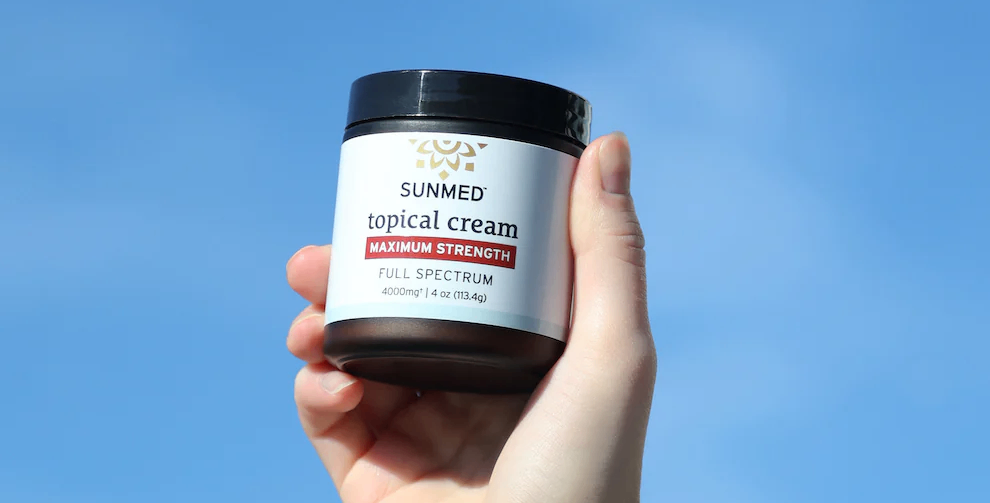
Key takeaways:
- A COA (Certificate of Analysis) is your roadmap to understanding what’s really in your CBD product.
- Always check the lab name, test date, and batch number first, and verify that the CBD and THC levels match the product label.
- Watch for red flags like missing information, outdated reports, or excessive THC.
Shopping for CBD can be an overwhelming experience if you're new to incorporating the supplement into your daily life. You'll see labels that boast “third-party tested” or “lab verified,” and you might even find a downloadable PDF called a Certificate of Analysis (COA). But what does that actually mean? And more importantly, how do you read one?
Understanding a COA is one of the most important aspects of CBD shopping. Think of it like checking the nutrition label on your food. It’s there to help you know what you’re really getting in every bottle from a scientific standpoint.
We're here to help you demystify COA sheets so you can choose CBD products that are safe, effective, and aligned with your wellness goals.
What Is a Certificate of Analysis (COA)?
A COA is like a report card for your CBD product, making sure it matches what the brand is advertising.
A Certificate of Analysis (COA) is a detailed report from an independent lab that tests CBD products. It verifies what’s inside every CBD product. The lab verifies cannabinoid levels and checks for potential contaminants, and they may even dive deeper into things like terpenes.
Here’s why it matters:
- CBD is not strictly regulated by the FDA. That means quality can vary widely between brands.
- A COA offers transparency, so you’re not left guessing about what you’re putting in your body.
- Reading a COA protects you from products that don’t contain what they claim, or worse, that contain harmful substances.
All reputable CBD companies will use an independent lab to test their products. If they don't, consider the absence of a COA to be a red flag.
Step 1: Check the basics
When you open a COA, start with the basics. Every legitimate COA should have data for a few key points listed at the top of the document.
- Lab name and contact info: This shows the test was done by a third-party lab, not the CBD company itself.
- Date of testing: Fresh results matter. Ideally, you want a COA that’s less than a year old.
- Batch or lot number: This should match the number on your product packaging. It ensures the COA reflects your specific product, not just a general sample.
An outdated COA or a COA from an analysis performed on a different batch of CBD won't be very helpful to you. Always double check the numbers to be sure that you're looking at current, accurate documents.
Step 2: Look at the cannabinoid profile
The cannabinoid profile is usually the first big chart you’ll see. It lists the different cannabinoids in the product.
You can expect your product to contain high amounts of CBD in conjunction with smaller amounts of cannabinoids like THC, CBN, and CBG if it's a full spectrum tincture. Broad spectrum products won't contain any THC, and isolate products will only contain CBD.
Here’s how to read it:
- CBD content: Check that the COA's CBD amount matches the label's claims. For example, if your bottle says “500 mg CBD,” the lab results should be close to that. A slight variation is normal, but a significant gap is a warning sign.
- THC Levels: Legally, hemp-derived CBD products must contain less than 0.3% Delta-9 THC in the U.S. The COA will tell you if the product meets that requirement.
- Minor cannabinoids: Some products include compounds like CBG or CBC, which can contribute to the overall effect. These aren’t always advertised, but they’re a nice bonus if you see them.
Understanding the cannabinoid profile of your product is important, especially if you're interested in avoiding products that may contain even trace amounts of THC.
Step 3: Look for contaminant testing
Safety is just as crucial as potency. A good COA will include test results for potential contaminants. Anything grown in the ground can contain contaminants.
- Heavy metals: Lead, mercury, arsenic, and cadmium should all be “ND” (not detected).
- Pesticides: Since hemp is a bioaccumulator (it absorbs whatever’s in the soil), pesticide testing is key.
- Residual solvents: These can appear if chemical solvents are used during extraction.
- Microbials: Tests for microbial contaminants like mold, bacteria, and yeast ensure your CBD is safe to consume.
If a COA skips contaminant testing, that's not a good sign. You won't be able to confirm the safety and purity of your batch.
Learning the lingo
COAs are written by scientists, and they use scientific terms to describe their findings. You may not immediately understand what these abbreviations mean at first glance.
- ND: Not detected. This means the compound is below the lab’s detectable limit.
- LOQ: Limit of quantitation. This is the smallest amount the lab can measure with confidence.
- mg/g or mg/mL: The concentration of cannabinoids per gram (for solids) or per milliliter (for liquids).
Once you know what these abbreviations mean, it's easier to interpret the findings on a CBD certificate of analysis.
FAQs
Do all CBD products come with a COA?
Any reputable CBD company should provide a COA, either on their website or by request. If they don’t, that’s a sign to steer clear.
How recent should a COA be?
Ideally, within the past year, and matched to your specific batch number.
What if I don’t understand the numbers?
Look for the basics: CBD amount, THC level, and “ND” on contaminants. The rest is helpful detail, but those three are the essentials.
Are COAs legally required?
Not in every state, but many reputable companies provide them voluntarily to build trust.
You have some choices to make based on the findings of a COA or the lack of a COA. Never choose a CBD product you aren't comfortable with, especially if the brand leaves you with more questions than answers.
The bottom line on reading a CBD certificate of analysis
Reading a CBD Certificate of Analysis may feel overwhelming at first glance, but once you know what to look for, it becomes second nature. Start with the basics. Lab info, batch number, and test dates are key verifying information. Then, move on to the cannabinoid profile and safety checks.
Sunmed premium CBD products don't cut corners. Wellness is at the core of what we do. Every wellness product we create is third-party tested for purity and quality. Shop Sunmed for CBD you can rely on.
Sources:
How to read a Certificate of Analysis | Michigan Safe Cannabis Coalition
